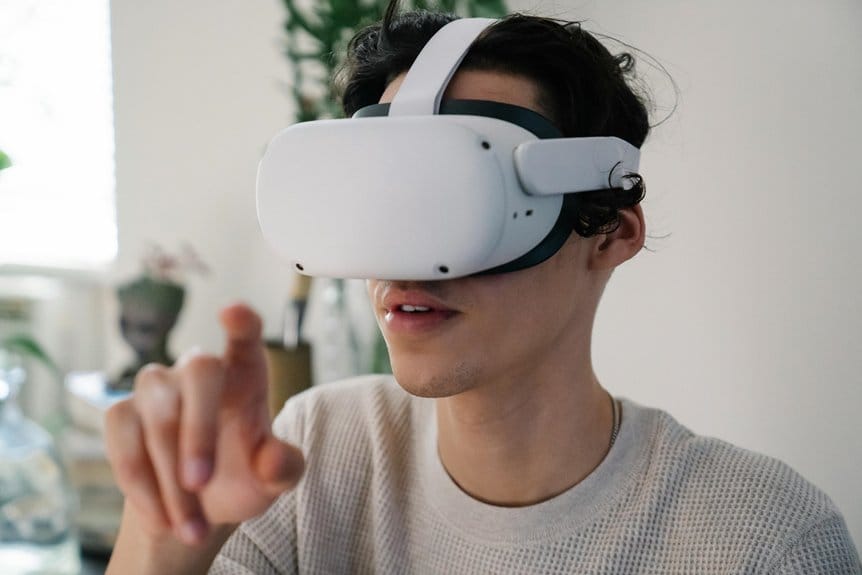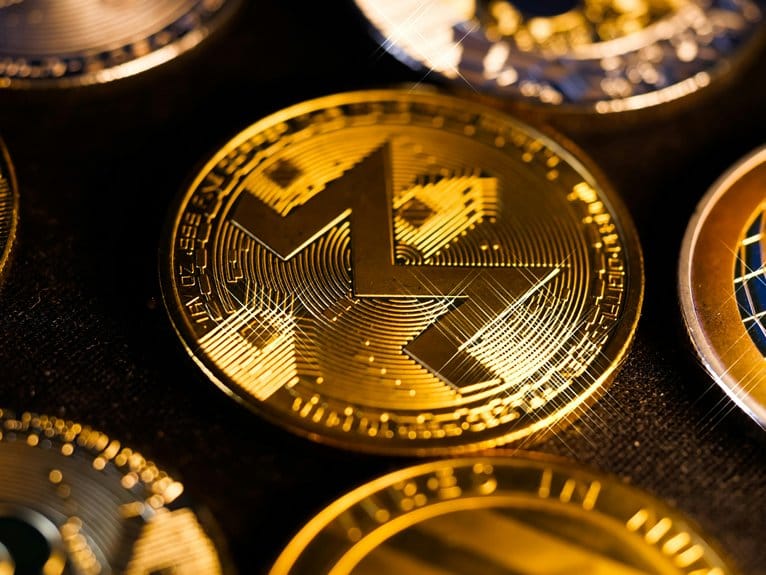The fusion of augmented reality and blockchain technology revolutionizes gaming by creating verifiable digital asset ownership within immersive experiences. This convergence enables players to truly own, trade, and transfer in-game items through blockchain-secured transactions while interacting with virtual elements in real-world environments. Smart contracts facilitate transparent marketplace operations, while location-based mechanics transform physical spaces into interactive gameplay zones. The integration supports persistent virtual worlds with authenticated interactions, robust virtual economies, and cross-platform digital identities. This technological synergy opens new horizons for gaming innovation, community engagement, and economic opportunities in the emerging metaverse landscape.
Understanding AR-Blockchain Gaming Fundamentals
At the intersection of augmented reality and blockchain technology, a new gaming paradigm is emerging that fundamentally transforms how players interact with virtual assets and environments. This convergence creates a framework where digital objects possess verifiable scarcity and ownership while seamlessly blending with the physical world through AR interfaces.
The integration enables revolutionary game mechanics that bridge the gap between virtual and real-world experiences. The underlying blockchain infrastructure provides transparent, immutable records of in-game assets, ensuring authentic user engagement through decentralized verification systems.
Players can now own, trade, and transfer digital items with unprecedented security while experiencing them in augmented spaces. This technological synthesis establishes a new foundation for gaming economies where virtual assets maintain real-world value and permanence.
The architecture of AR-blockchain gaming combines distributed ledger protocols with spatial computing, creating an ecosystem where every interaction is authenticated and preserved. This foundation enables developers to design persistent virtual worlds that maintain state across sessions while ensuring that player achievements, possessions, and progressions remain permanently recorded and verifiable within the blockchain network.
Digital Asset Ownership Revolution
Three fundamental shifts define the digital asset ownership revolution in AR-blockchain gaming: true ownership of virtual items, interoperability across gaming platforms, and decentralized economic models.
Through blockchain technology, players now possess verifiable ownership of their in-game assets, transforming digital collectibles into tangible investments with real-world value. This paradigm shift eliminates traditional publisher-controlled economies and establishes player-sovereign digital property rights.
Asset interoperability represents a crucial advancement, enabling players to transfer their virtual possessions across different gaming environments. This cross-platform functionality creates an interconnected gaming ecosystem where digital items maintain their value and utility beyond single-game constraints.
Smart contracts ensure transparent transactions and authenticate ownership transfers, while decentralized marketplaces facilitate peer-to-peer trading of gaming assets.
The economic implications extend beyond gaming, as blockchain-verified AR assets become tradeable commodities in emerging metaverse economies. This transformation establishes new revenue streams for developers and players alike, while fostering innovative gameplay mechanics that leverage unique ownership properties.
The convergence of AR and blockchain technology is revolutionizing traditional concepts of digital ownership, creating a self-sovereign gaming future.
Virtual Economies and Trading Systems
Building upon blockchain-secured digital ownership, virtual economies in AR gaming have evolved into sophisticated trading ecosystems that mirror real-world financial markets. Players can now engage in complex transactions through decentralized trading platforms, where virtual assets are bought, sold, and exchanged with unprecedented security and transparency.
These systems operate continuously, enabling real-time price discovery and market dynamics that reflect genuine supply and demand.
Virtual asset marketplaces have become increasingly sophisticated, incorporating smart contracts that automatically execute trades based on predefined conditions. These platforms facilitate seamless cross-game trading, allowing players to exchange assets from different AR gaming environments within a unified economic framework.
The integration of blockchain technology ensures that each transaction is verifiable and immutable, effectively preventing fraud and duplicate assets.
The emergence of these robust trading systems has created new opportunities for players to monetize their gaming achievements and virtual possessions. Economic models within these platforms now support various trading mechanisms, from simple peer-to-peer exchanges to complex auction systems and derivatives trading, fostering a vibrant digital economy that bridges virtual and real-world value creation.
Location-Based Gaming Applications
While traditional gaming experiences typically confine players to static environments, location-based AR applications have revolutionized interactive entertainment by seamlessly integrating real-world geography with virtual gameplay elements.
These systems leverage geo-targeted gameplay mechanics to transform everyday locations into interactive digital landscapes, creating immersive experiences that bridge virtual and physical realms.
The integration of blockchain technology with location-based gaming has introduced verifiable digital assets tied to specific geographical coordinates, enabling developers to implement sophisticated location incentives and reward systems.
Players navigate augmented maps that overlay digital content onto real-world environments, encouraging real-world interaction and strategic movement through physical spaces. This combination has proven particularly effective in fostering community engagement, as players naturally congregate at designated locations to participate in shared gaming objectives.
The technology's evolution has led to increasingly sophisticated applications, including persistent virtual worlds anchored to physical locations, territory-based gameplay mechanics, and location-verified digital asset transactions.
These systems create dynamic ecosystems where player activities and achievements are intrinsically linked to their physical presence and movement patterns, fundamentally transforming how users interact with both digital content and their immediate environment.
Future Gaming Experience Transformations
The convergence of augmented reality and blockchain technologies signals a fundamental shift in how future gaming experiences will evolve. This integration will revolutionize immersive experiences by creating persistent virtual worlds that seamlessly blend digital assets with physical environments, while ensuring authentic ownership and value transfer through blockchain verification.
Cross-platform integration will become more sophisticated, allowing players to maintain consistent digital identities and assets across multiple gaming environments. Social interactions within these spaces will transform through blockchain-verified credentials and reputation systems, creating more meaningful and secure community engagement.
The implementation of gamified education will benefit from this fusion, as verifiable achievements and skill acquisition become permanently recorded on the blockchain. Advanced storytelling mechanics will emerge through the combination of spatially-aware AR environments and blockchain-tracked narrative choices, creating unique, personalized gaming journeys.
User-generated content will gain new significance as creators can establish provable ownership and monetization channels for their contributions, fostering a self-sustaining ecosystem of player-driven innovations. This technological synthesis will ultimately redefine gaming from a purely entertainment medium to a multifaceted platform for social, educational, and economic interaction.
Frequently Asked Questions
How Much Battery Life Does Ar-Blockchain Gaming Consume on Mobile Devices?
AR-blockchain gaming typically consumes 20-30% battery per hour, though battery optimization techniques and energy efficiency improvements continue advancing to reduce power drain during extended gameplay sessions.
Can Ar-Blockchain Games Be Played Without an Internet Connection?
AR-blockchain games require constant internet connectivity for blockchain transactions and real-time data synchronization. Offline gameplay is severely limited, significantly impacting the core user experience and fundamental functionality.
What Happens to Game Assets if the Gaming Platform Shuts Down?
Blockchain-secured digital ownership ensures asset permanence beyond platform dependency. Users retain rights to their assets even if platforms shut down, allowing transfer or trading through alternative marketplaces and decentralized networks.
Are Special Glasses or Equipment Required for All Ar-Blockchain Games?
Hardware compatibility varies across AR-blockchain games. While some require specialized equipment like smart glasses, others function on standard smartphones, optimizing user experience through device-agnostic approaches for broader accessibility.
How Secure Are Ar-Blockchain Games Against Hackers and Cheaters?
Blockchain's inherent security measures provide robust protection against hacking, while smart contracts implement automated cheating prevention. However, AR interfaces may introduce new vulnerabilities requiring continuous security updates and monitoring.
Conclusion
The convergence of augmented reality and blockchain technology represents a transformative leap in gaming architecture. Through decentralized asset ownership, secure virtual economies, and immersive location-based experiences, this fusion establishes unprecedented opportunities for value creation and player engagement. As these technologies mature, the gaming landscape will evolve toward more sophisticated, transparent, and interconnected ecosystems, fundamentally redefining interactive entertainment and digital asset management.




